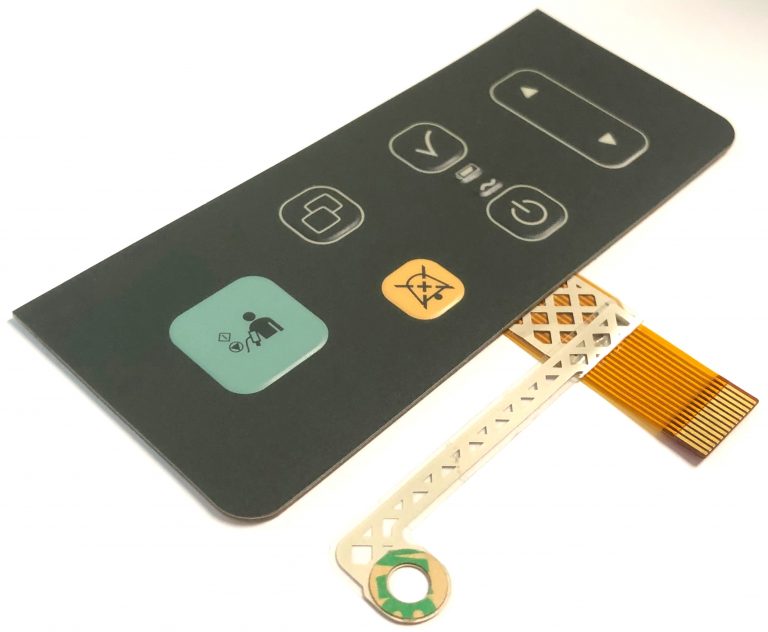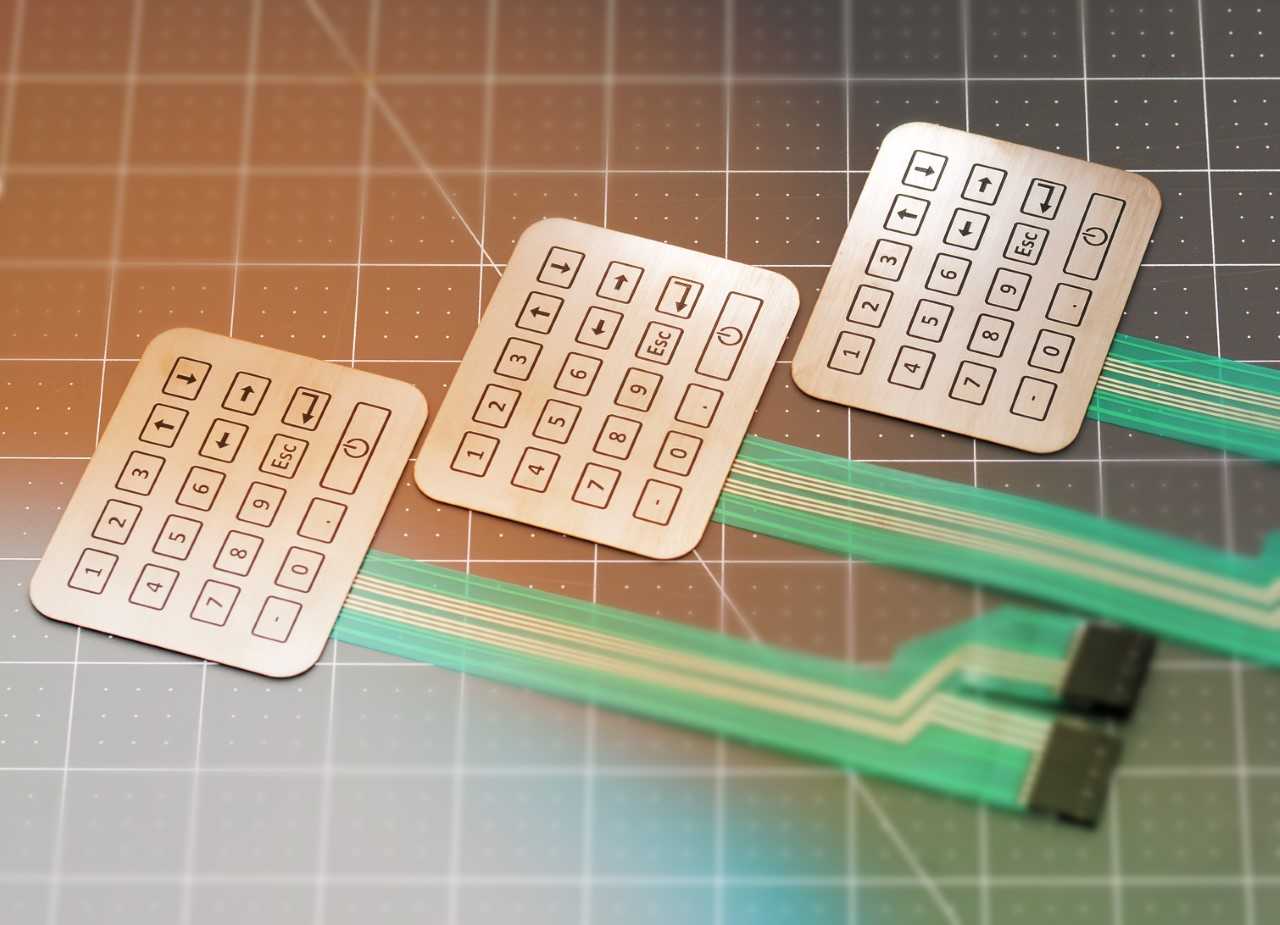All Regarding Membrane Switch: Understanding Its Style and Functionality
When you assume concerning the control user interfaces in modern-day devices, membrane layer buttons often come to mind. These parts are greater than simply buttons; they blend design and functionality seamlessly. Understanding exactly how they work and what makes them effective can transform your point of view on everyday electronic devices. There are subtleties to their design and performance that you may not be aware of. Allow's discover what collections membrane layer changes in addition to other control systems.
What Are Membrane Layer Buttons?

Their smooth nature makes them easy to tidy and immune to dirt and dampness, a vital attribute in numerous atmospheres. Membrane switches can likewise be personalized relating to shape, size, and graphics, enabling producers to produce unique user interfaces customized to particular products. Plus, they're light-weight and thin, which aids in lessening the general bulk of tools. Overall, membrane layer buttons play a significant duty in enhancing customer experience throughout a large array of applications.
How Membrane Switches Over Work
When you push a secret on a membrane button, it activates an uncomplicated yet effective device. membrane switch manufacturer. The top layer, typically made of versatile product, pushes down onto a conductive layer below it.
You'll discover that the tactile feedback varies based upon the button layout, supplying either a soft click or an extra noticable reaction. Once you release the trick, the membrane layer returns to its original setting, resuming the circuit and quiting the signal. This process happens nearly instantaneously, guaranteeing a receptive customer experience.
Membrane layer switches are preferred due to their longevity and resistance to dust and wetness, making them ideal for different applications, from household home appliances to medical gadgets. Understanding this procedure aids you value their extensive usage.
Trick Elements of Membrane Switches
Comprehending the essential elements of membrane switches is essential for realizing their functionality and style. The protective layer shields against ecological factors and put on, expanding the button's lifespan. By understanding these elements, you'll get insight into how membrane layer changes run and their importance in different applications.
Materials Used in Membrane Switch Over Style
The efficiency and durability of membrane layer switches heavily depend on the materials used in their style. You usually experience polyester and polycarbonate as main substrates because of their superb toughness and adaptability. These materials resist scratches and chemicals, making them optimal for requiring environments.
The conductive layers often make use of silver or carbon, picked for their reliability and conductivity. membrane switch manufacturer. Silver provides superior performance, while carbon is an economical alternative. For the overlay, you may consider a matte or glossy surface, relying on your aesthetic demands and user experience
Adhesives play a vital role also; they bond layers safely and assure long life. Ensure to pick adhesives that withstand ecological variables like temperature level and moisture. Don't ignore the importance of an excellent printing method for graphics, as it enhances both performance and aesthetic appeal. Picking the best materials will guarantee your membrane button stands the examination of time.
Style Factors To Consider for Membrane Buttons
While making membrane buttons, it's essential to take into account numerous factors that influence their functionality and user experience. Start by focusing on the design and button size; make particular they're instinctive and easy to navigate.
Validate your design accommodates ecological aspects, like dampness or temperature variations, which can affect efficiency. By carefully considering these components, you'll create a membrane switch that enhances use and complete satisfaction.
Applications of Membrane Layer Switches
Membrane layer buttons are pop over to this web-site flexible parts located in different applications, from industrial equipment to consumer electronic devices. You'll see their influence in equipments that need durable user interfaces and in devices that gain from smooth layouts. Recognizing these applications assists you appreciate the capability and practicality of membrane layer buttons in day-to-day modern technology.
Industrial Devices Usage
When you're looking to boost the capability of commercial tools, membrane switches click reference supply a reputable remedy that incorporates longevity with user-friendly style. These buttons are excellent for harsh environments, supplying resistance to dust, wetness, and chemicals. Embrace membrane switches to improve your operations and improve general performance.
Customer Electronics Integration
In the domain of consumer electronics, membrane layer switches play a vital duty in improving user communication and gadget functionality. You'll find them in devices like microwaves, remote controls, and video gaming consoles, supplying a seamless method to interact with modern technology. Their sleek style allows for simple combination into various products, making controls intuitive and straightforward. With their capability to include graphics and backlighting, you can enjoy a modern-day visual that matches the gadget's total appearance. Membrane layer switches likewise guarantee toughness and resistance to dirt and dampness, extending the lifespan of your electronics. By picking membrane layer switches, you improve not just the performance however additionally the style of your tools, making daily communications smooth and delightful.
Advantages and Downsides of Membrane Layer Switches
While membrane switches supply a variety of advantages, they also come with some downsides that you need to take into consideration. One considerable advantage is their small style, making them ideal for space-constrained applications.

Membrane switches can have a shorter life expectancy contrasted to mechanical buttons, specifically under hefty usage. They can also be much less tactile, which might influence individual Find Out More feedback throughout procedure. Stabilizing these pros and disadvantages will certainly aid you figure out if membrane layer switches are the appropriate fit for your project.
Frequently Asked Inquiries
How Much Time Do Membrane Switches Over Normally Last?
Membrane changes generally last between 5 to ten years, depending upon use and environmental conditions. You'll intend to evaluate factors like wear, exposure to moisture, and temperature level variations to gauge their durability effectively.
Can Membrane Changes Be Personalized for Particular Styles?
Yes, you can tailor membrane switches to fit details designs (membrane switch manufacturer). You'll have the flexibility to pick colors, shapes, and layouts that match your task's requirements, guaranteeing they blend effortlessly with your total aesthetic
What Is the Expense Array for Membrane Layer Switch Production?
The cost variety for membrane layer button production usually drops in between $1 and $10 each, depending on elements like style intricacy, amount, and materials. You can get quotes from producers to locate the very best alternative.

Are Membrane Layer Switches Over Water Resistant or Immune?
Membrane layer buttons can be developed to be water resistant or immune, depending on materials used and building approaches. If you need them for wet environments, ensure you define those demands during the design procedure.
Just How Do Membrane Layer Switches Compare to Conventional Switches?
Membrane switches are normally thinner and much more versatile than standard switches, providing a smooth style. They're usually easier to clean and incorporate, yet could not provide the responsive comments you're made use of to with mechanical alternatives.
Final thought

Comments on “A good membrane switch manufacturer offers adaptable design options for advanced applications.”